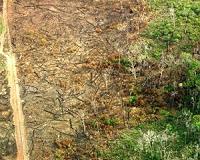| . |  |
. |
Madrid, Spain (SPX) Jul 06, 2010 European mountains have experienced a decline in forestry, agricultural and livestock operations over the past 50 years, due to the exodus of rural populations and socioeconomic changes. These areas have become covered by scrubland. Burning has become a common tool used to regain the landscape of olden times and maintain grazing areas at altitudes of between 1,400 and 2,100 metres above sea level in the Pyrenees. "Hundreds of hectares of scrubland of broom (Cytisus oromediterraneus) are burned each year, and these are an important habitat for conservation purposes in Europe, and one of the most heavily affected by this practice", Pere Pons, lead author of the study and a researcher at the University of Girona (UdG), tells SINC. The results of the study, published in the latest edition of the journal Animal Conservation, show that various species react differently to fire. According to the Catalan scientist, the Dartford warbler (Sylvia undata) recovers more slowly at higher altitudes than lower ones. The skylark (Alauda arvensis), the woodlark (Lullula arborea), and the red-backed shrike (Lanius collurio), which are all threatened birds in Europe, return to maximum abundance between 10 and 19 years after fire. However, by 20 years after burning, "the scrub starts to become closed, and the bird community becomes poorer in species and of less conservation interest", says Miguel Clavero, co-author of the study and also a scientist at the UdG and at the Forest Technology Centre of Catalonia (CTFC). The team also observed that the intensity of the fire is only "significant" in the first year after it has taken place. Clavero said: "We need long-term biodiversity evaluations that will help to improve planning of the intervals between burning and the various methods used for clearing scrubland at different altitudes". For this reason, the researchers propose "scheduling low-intensity fires, because these have less immediate impacts on vegetation and fauna". Abandonment of rural areas, a threat to biodiversity Changes in land use and the abandonment of rural areas are leading factors in the global environmental change threatening the biodiversity upon which human beings depend. Mountains with a heterogeneous landscape containing large areas of cropland and grazing have in many European regions become a much more uniform landscape dominated by scrubland and woodland. The method used over the past two or three decades to recover these former landscapes has been officially-prescribed burning.
Share This Article With Planet Earth
Related Links FECYT - Spanish Foundation for Science and Technology Forest and Wild Fires - News, Science and Technology
 Fires In Amazon Challenge Emission Reduction Program
Fires In Amazon Challenge Emission Reduction ProgramExeter, UK (SPX) Jun 09, 2010 Fire occurrence rates in the Amazon have increased in 59% of areas with reduced deforestation and risks cancelling part of the carbon savings achieved by UN measures to reduce greenhouse gas emissions from deforestation and degradation. New research led by the University of Exeter, published on Friday 4 June, in Science, analysed satellite deforestation and fire data from the Brazilian Ama ... read more |
|
| The content herein, unless otherwise known to be public domain, are Copyright 1995-2010 - SpaceDaily. AFP and UPI Wire Stories are copyright Agence France-Presse and United Press International. ESA Portal Reports are copyright European Space Agency. All NASA sourced material is public domain. Additional copyrights may apply in whole or part to other bona fide parties. Advertising does not imply endorsement,agreement or approval of any opinions, statements or information provided by SpaceDaily on any Web page published or hosted by SpaceDaily. Privacy Statement |